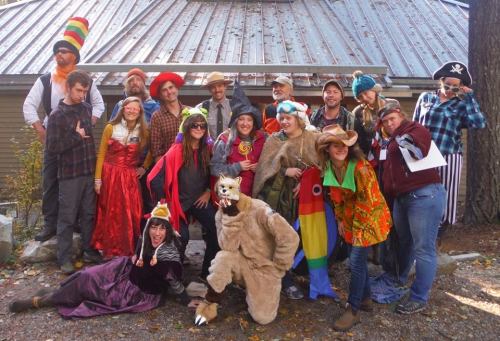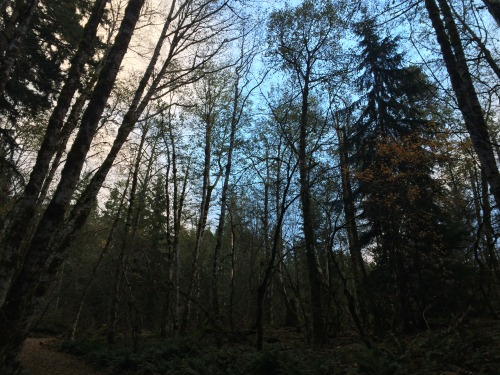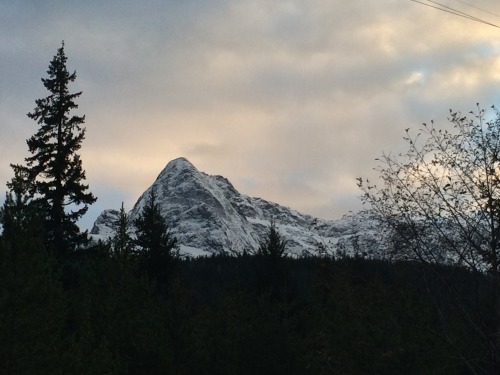Seasons Change: Phenology and the end of Mountain School

The changing seasons are a big deal in the North Cascades.
This may seem like an obvious statement for an environmental learning center, but one in which I find more truth every day. As a person who spent so many formative years in the Middle East, a place where the changing seasons simply meant a change from “really hot” to “unbearably hot,” living in a place with four distinct, beautiful seasons brings a whole new set of knowledge.
As the new graduate student cohort (C14!), we spent our first few months at the ELC being introduced to this new, diverse ecosystem and the regular cast of characters around here. We learned the differences between fern types, how to tell a Mountain Hemlock apart from a Western Hemlock (it’s hard!), and all the types of ground cover we should try to avoid trampling in our excitement to explore. But we were also introduced to a concept still very much on our minds: phenology.
A quick internet search tells me that the definition of phenology is the study of plant and animal life cycles and how they are influenced by seasonal changes in climate, elevation, as well as changes from year to year. After a glorious late summer, it feels as if we’ve ramped up into phenological hyperdrive.
Sourdough Creek, which has been dry since our arrival at the ELC in late July, suddenly started flowing in late October, and it felt like a rite of passage for C14. Our first experience of the changing tides and our own evolution within this program. The waterfall at the top of the Sourdough Creek Trail which had slowed to a trickle with a dry stream bed over the summer now flows with a deafening roar. Suddenly we understand how avalanches and rock slides happen here. Green, leafy canopies that shaded us from the intense sun during our first grad school meetings gave way to picturesque golden walkways, then to skeletal brown arms that seem to reach for the sky in search of the elusive November sunlight. The pikas we once heard while passing talus slopes on campus have quieted down for the winter. Even Diablo Lake which greeted us in July with shades of turquoise, emerald, and serpentine now matches the color of the sky – a mix of blues and grays.

Aside from these beautiful, and occasionally stark, phenological changes we’ve witnessed, another major change has taken place: the end of the fall season of Mountain School. Cohort 14 got the sink-or-swim introduction to grad school, moving without rest from a month-long field expedition to a two week fall training at the ELC, and then into six weeks of teaching hands-on science curriculum to over 900 of western Washington’s fifth graders.
Much has been written about Mountain School over the years in Chattermarks, and with good reason. Along with the flora and fauna at the ELC, these energetic 10 and 11 year olds bring such a sense of life and activity to this ecosystem. For six weeks we taught lessons on rocks, the water cycle, and different biotic elements of this area, and found our own lessons changing with the seasons. We marveled right along with our students at the first sight of snow on Pyramid and Colonial Peaks, and then at the lowering snowline or, as I put it, the inescapable advance of winter. Our teaching flow and our choice of group games changed as sunlight waned and temperatures dropped. Hikes to the waterfall became less frequent, often being replaced by indoor lessons accompanied by hot chocolate.

Mountain School ended for the season on November 7th, the same day as the start of the Youth Leadership Conference. While the YLC deserves its own post, I will say that the theme of the conference – reflection and planning ahead – felt like a perfect way to mark the transition into the winter at the ELC. We too, staff and graduate students alike, are reflecting on the past weeks: lessons learned, experience gained, and goals for next season. We are planning for our own hibernation as programming at the ELC slows down and grad students turn our attention to non-profit management and curriculum design.
Very appropriately, just two days after the end of the Youth Leadership Conference and on the second day of the ongoing WildLinks Conference, we saw our first flakes of snow.
We are grateful for an amazing fall season of Mountain School, for the time to reflect and learn (indoors!) for the winter, and excited for the first 2015 session of Mountain School to begin which will, undoubtedly, carry with it a harbinger of spring.

